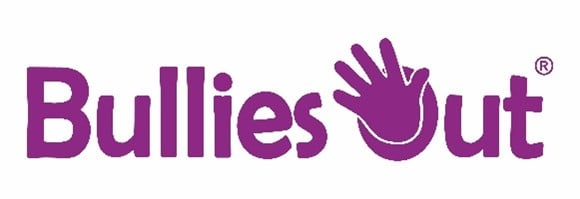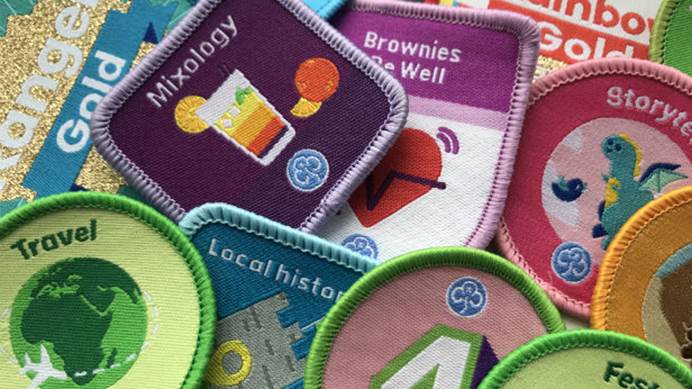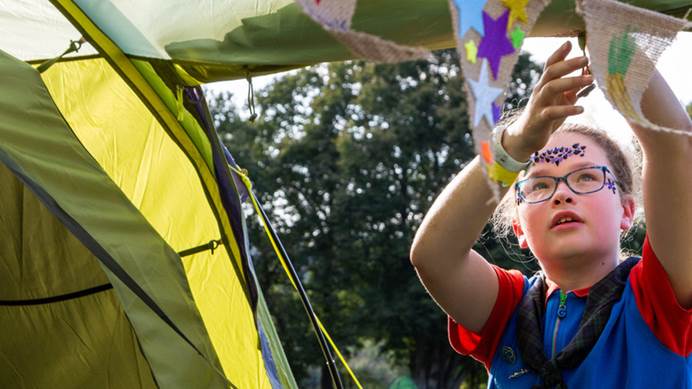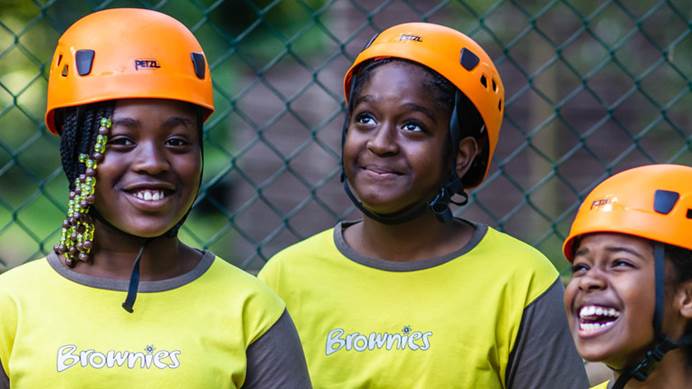Safe The World
This peer education topic helps members take a stand for safety
We need to feel safe to thrive.
Girlguiding is all about helping young people to thrive. That’s why peer educators asked us to create Safe The World. We're giving members the opportunity to understand, identify and take action against unsafe behaviours.
We're helping girls take a stand for safety
Safe The World is about the situations young people face every day. It tackles the topic of safety by looking at how:
- Everyone experiences safety differently.
- To spot and deal with unsafe behaviours.
- To empower everyone to become upstanders and campaign for a safer world for all.
Safe The World counts towards your take action unit meeting activity hours.
Peer educators can bring Safe The World to your unit
We’re training peer educators to deliver Safe The World workshops in Girlguiding units. Fill in our online form to ask about a workshop with a local peer educator.
Don’t worry if there aren’t any peer educators trained in Safe The World in your area yet - trainings are happening all across the UK.
Train as a peer educator to deliver Safe The World
Follow our three easy steps to learn how to run a Safe The World session. We’ll make sure you’re fully confident on the topic so you can deliver brilliant workshops to young people.
- Watch the video below.
- Complete the online quiz below.
- Go to a face-to-face or virtual training day to practise the activities. Ask your country or region office when the next training event is happening.
Steph: Hi, I’m Steph. Welcome to Safe the world, a peer education resource on safety. This resource aims to create a space to discuss the issues of safety and empower people to create a safer world for everyone. This video will guide you through the topic of safety, we’ll talk about what Safe the world is, the steps and key issues involved in delivering a fun and impactful session, and how you can keep the learning going after a session.
So what is safety? Imagine your safe place. Maybe you’re hugging a family member, drinking tea at a friend’s house or curled up on a sofa watching your favourite movie. What do these all have in common? Everyone is out of harm’s way, away from anything that could hurt them, and there’s little to no risk. Everyone should feel safe whatever they’re doing and wherever they are, but sadly this isn’t always the case.
We created Safe the world as young people have told us they don’t always feel safe. Our girls attitude survey showed us many girls and young women are experiencing unsafe behaviours and situations every single day. 50% of girls and young women aged 13 to 18 avoid going out at night, 25% say fear of sexual harassment stops them from wearing what they want and 66% of young women have experienced public sexual harassment. It’s affecting the way we live our lives, limiting our freedoms and it needs to change.
It’s important to know that some of the material in Safe the world may be upsetting for some people, reach out to your Peer education coordinator or email [email protected] for support if you have questions.
In Safe the world we’ll discuss our different experiences of safety, what unsafe and toxic behaviours might look like and behaviours that could upset others. We’ll then move onto what you can do in an unsafe or potentially unsafe situation, ways to campaign to create a safer world for all and empowering others to join in the conversation.
We want everyone who takes part in a Safe the world session to remember these four principles: I am important, nobody has the right to hurt me, I don’t have the right to hurt anyone, if someone hurts me, it’s not my fault. It’s all about creating a supportive space to discuss the issues of safety and empowering people to create a safer world for everyone.
Now you know what we’re trying to achieve, here’s what we’re not trying to do. We’re not trying to tell people how to be safe. We’re not giving advice on how people should change their behaviour to become safe. Doing this does not tackle the issue, it only puts more responsibility on people by telling them what to do or what they are doing wrong. We don’t put blame on the victim, like suggesting that what they were wearing, or the route they took somehow puts them at fault. We don’t criticize how people react in unsafe situations, such as 'why did they give their belongings away?', 'why didn’t they fight off the attacker?'. Remember, it’s never the victim’s fault, we want to empower people, not criticize how they deal with situations.
The four steps to delivering a Safe the world session. Following these four steps means every person who receives a peer education session has the same great experience.
Step one, the introduction. Ask everyone to think about what ‘safety’ and ‘staying safe’ means to them. We know that safety is different for everyone. It’s influenced by the situation, culture and environment you’re in. Recognize and respect that what feels safe to us may not feel safe to another person. For example, Kiera might feel completely safe getting in an elevator. But Fatima might feel claustrophobic and decide to get the stairs. Neither of these people are wrong for their feelings on safety.
Step two is my safety. This step gives you the tools to identify and respond to unsafe situations. 'Assessing situations'. This is working out when a situation is moving out of your comfort zone, from ‘safe’ to ‘unsafe’. And thinking carefully about what actions you can take. It’s important to listen to your instincts when warning bells go off and make decisions on what to do next. For example, Alice is happy hanging out with Taylor until they want to sneak out to the shop. Alice doesn’t feel comfortable doing this. How would you react?
'Setting boundaries' introduces consent and boundaries in age-appropriate ways. It explores what your boundaries are and how other people’s might be different. Respecting everyone’s boundaries is important. For example, Sara is incredibly comfortable with hugs, but Michaela isn’t keen on being touched.
'De-escalating situations' is about calming down situations before they become out of control and cause harm. For example: Jennifer is getting angry at Abel because he won’t share his homework to copy. How can Abel help calm her down so he can leave the situation?
The third step is making the world safer. We want to empower everyone to stand up and make change for a safer world. 'Campaigning for a safer world'. You could discuss the news, create a campaign, spread slogans, or simply share with the people around you all the things you’ve been learning about safety. 'Being an upstander'. What can you do when you see a harmful situation unfolding? The most important thing is to keep yourself safe, but that doesn’t mean you can’t take action. You could use the 5 Ds to help.
Delegate. Get help from someone else, you could tell a trusted grown-up what has happened. Delay. After the situation has de-escalated, check in with the individual who experienced the harm. Check that they’re okay and offer them support. Direct. Speak up about the harmful behaviours. Be firm and clear. Distract. Take an indirect approach to de-escalate the situation and distract the person causing harm. Document. Document the behaviours you witnessed, including who was involved and who else may have witnessed the harm. Take a picture, video or remember as many details as possible.
Our final step is finishing on a positive. All of these topics can be quite tough to go through. Make sure the group takes care of their wellbeing following the session, finish the session thinking about your support networks and how you can support each other.
During a Safe the world session you might discuss some of these key issues.
Public harassment. From catcalling, being whistled at, hearing or being targeted by hate speech, are just a few examples of what we have all experienced in public spaces. A significant part of this can be sexually motivated and be considered public sexual harassment, for instance being asked to smile or upskirting. These behaviours can make us feel unsafe in public spaces and can cause us to avoid them completely. This behaviour is unacceptable and we want to empower everyone to change attitudes and make all spaces safer.
Victim blaming. Putting some or all the blame on those affected by unsafe behaviours. When someone is the victim of harmful behaviour, people can ask questions that take the fault away from the attacker. For instance, ‘were you giving mixed messages?’ or ‘are you sure you didn’t misunderstand?’. This can stop people from sharing when something harmful happens to them or can make them think they are at fault. Most importantly it shifts the focus and blame from the perpetrator. This isn’t fair. No one has the right to hurt someone and it is never the victim’s fault.
Safety actions. The different actions we all take to keep ourselves safe, like carrying keys between our fingers or only going out when it’s light. If they make you feel safe we’re not suggesting you stop using them, but wouldn’t it be great if we created a world where we would feel safe without them? That’s what we want to achieve.
Consent. Using our voice to say what we do and don’t want to do is really important in all sorts of situations. Consent can be about borrowing things, hugs, sexual situations – lots of things need consent. And consent needs to be an enthusiastic, non-coerced and age-appropriate ‘yes’. Equally important is understanding how to behave when we are told no and not given consent. consent.
Boundaries. Everyone experiences situations differently. What might seem fine to one person may be really scary or uncomfortable to another. The invisible lines we create about what we are comfortable with are called boundaries. It is really important to think about your own boundaries and voice when you don’t want to do something as well as respect other peoples’ and support their choices.
Toxic behaviours. Not all safety refers to physical harm. Sometimes people around us can say things that are unkind and make us feel uncomfortable or sad. Perhaps a friend always borrows your things but doesn’t give them back or tells you who to be friends with. It’s really important to be able to recognise and stand up to these behaviours as they can harm your and others’ mental wellbeing.
Flight, fight, freeze and appease. People react differently in situations of harm. Some of our instinctive reactions are to fight or flight (get away from) the danger. Just as common are freezing in place or trying to appease the person scaring you. We shouldn’t judge ourselves, anyone else or their actions in response to an unsafe situation. Remember, it’s never anyone’s fault if someone else harms them.
After your great peer education session the unit may want to continue to explore the topic. Go to the Safe the world page to find links to the programme that will support continued learning and information about our friends who helped to create this resource.
Thanks for taking the time to learn about Safe the world. We’ve looked at why we chose the topic of safety, and what the topic covers. We’ve explored the steps you’ll follow when you deliver Safe the world and outlined the key issues. Then finally we talked about what you can do after a session to keep the learning going.
We’d like to thank our friends at Our Streets Now, Bullies Out, Plan International UK, and Commander Catherine Roper and Detective Sergeant Claire Graves from the metropolitan police service. As well as the Safe the world task and finish group for their contributions to the development of this resource.
Finally, remember to pop back to this video before your training and your sessions as a reminder of the theory.
Safe The World quiz
After your session
Once your session is over you may want to look deeper into some of the issues covered. There are loads of places in the Girlguiding programme that do this. Read the leader guidance to find out more.
Extra resources
- Buy the badge at the Girlguiding shop.
- Download our Safe The World poster to give to units that have completed the session.
- Download our peer education postcards to get people booking sessions.
Partners
Thank you to all our partners for their contribution to Safe The World.
- Bullies Out, for their work on setting boundaries, de-escalating and assessing situations. Get more information and resources from the Bullies Out website.
- Our Streets Now, for their support with educating and campaigning to end public sexual harassment. Get more information and resources from the Our Streets Now website.
- PLAN International UK, for their help on campaigning for a safer world and for the fantastic campaigns they run. Take a look at their crime not compliment campaign.
- Commander Catherine Roper and Detective Sergeant Claire Graves of the Metropolitan Police Service, who've helped us define and understand when something we’re talking about is breaking the law and clarifying our use of language.

![]()
![]()





